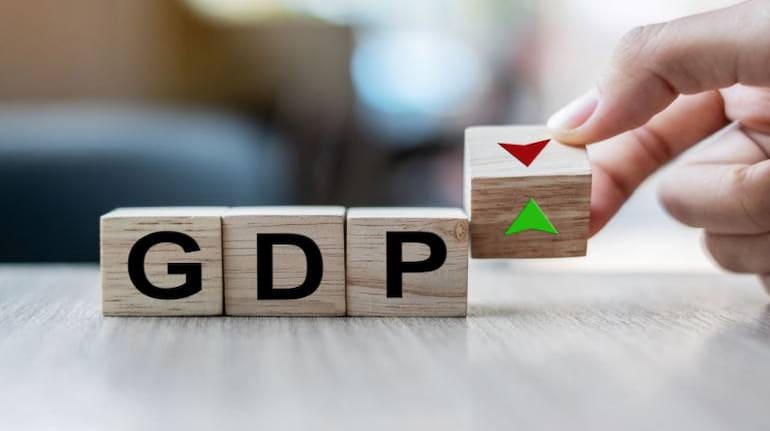



The National Statistical Office (NSO) released the gross domestic product (GDP) data for Q3 FY2023 and the second advance estimates for FY2023 on Tuesday. Given the plethora of revisions for the last two years, interpretations are a bit challenging. While sectoral revisions may be forthcoming, and growth relative to pre-COVID levels actually improved, the year-on-year (YoY) GDP growth may have bottomed out in Q3 FY2023.
Firstly, the YoY GDP growth for Q3 FY2023 has been pegged at 4.4 percent, an expected base-effect led slowdown from 6.3 percent in Q2 FY2023. However, the print is well below the level that we had estimated, on account of a surprisingly weak trend in private consumption. The latter belies the unarguable uptick in the consumption of services as well as a buoyant festive season, amidst mixed signals of rural demand. We foresee revisions in some of the sectoral trends as more data becomes available.
Some PuzzlesMoreover, taxes less subsidies have risen by a subdued 1.4 percent in Q3 FY2023, making the GDP growth of 4.4 percent trail the gross value added (GVA) rise of 4.6 percent, after a gap of four quarters. Within the disaggregated GVA, most of the sub-sectors broadly performed in line with our forecasts, other than the tepid 2.0 percent rise in public administration, defence and other services. This is curious, given that the Government of India’s (GoI’s) non-interest revenue expenditure recorded a double-digit growth in that quarter, led by higher release of fertiliser subsidies. State government revenue spending displayed a 5 percent rise while other services too have recovered appreciably.
On a positive note, GDP growth relative to the pre-COVID level firmed up quite considerably to 11.6 percent in Q3 FY2023 from 9.4 percent in Q2 FY2023. We are taking this as a signal of an improvement in the underlying momentum of growth, which nevertheless remains quite uneven.
Further, the NSO retained its estimate of the FY2023 GDP expansion at 7.0 percent, despite a downward revision for Q1 FY2023. This means that it anticipates a pickup to 5.1 percent in Q4 FY2023, suggesting that growth has bottomed out at the aforesaid 4.4 percent in Q3 FY2023.
Optimistic AssumptionA 5.1 percent rise in Q4 FY2023 appears somewhat optimistic at this juncture. The NSO implicitly expects this agricultural sector to grow by a six-quarter high 4.3 percent in Q4 FY2023. Higher rabi acreage, early sowing, improved fertiliser availability and healthy reservoir storage, all augur well for crop production. In line with this, the 2nd Advance Estimates of crop production for FY2023, indicated a healthy trend in the production of rabi crops relative to the Final Estimates for FY2022. However, rising temperatures in March 2023 may play spoilsport as far as yields are concerned. Interestingly, the agri GVA growth prints have been revised down quite markedly by the NSO for Q1-Q2 FY2023.
Moving on to the non-agri sectors. The YoY growth in the ICRA Business Activity Monitor – an index of high frequency indicators, rebounded to 12.4 percent in January 2023 from 8.0 percent in December 2022 as the low base related to the third wave of COVID-19 pandemic in India kicked in. Subsequently, the early data for February 2023 was mixed, with a rise in average daily vehicle registrations and fuel consumption, and a moderation in the electricity demand growth.
The Government of India’s own capex logged a high expansion in January 2023. The core sector growth too improved in that month. However, merchandise exports contracted, which is likely to persist in the rest of the ongoing quarter. Overall, we project the GDP growth at 4.5-5.0 percent in Q4 FY2023, which implies a sub-7 percent GDP growth for FY2023.
Looking ahead, India’s growth trajectory for FY2024 is likely to be challenged by the ongoing slowdown in external demand and the consequent drag on exports, although the outlook for consumption and investment demand appears relatively brighter. On balance, we expect India’s GDP growth to moderate to ~6 percent in FY2024, in real terms. Moreover, apprehensions of a potential return of the El Nino phenomenon around the summer season could lead to a sub-par south-west monsoon in 2023, and hurt the prospects of crop production and rural demand. While we remain watchful of the evolving situation, the downside to the FY2024 GDP growth is estimated at up to 50 bps.
So, what does the latest growth data imply for the Monetary Policy Committee’s (MPC’s) next meeting? GDP growth in Q2 FY2023 printed in line with the MPC's December 2022 projection of 4.4 percent. CPI inflation may ease a tad in February 2023 from the unexpectedly high 6.5 percent in January 2023. The optics of inflation exceeding the 6.0 percent upper threshold of the MPC’s medium term target for two consecutive months amidst a persistently aggressive US Federal Reserve suggest that another rate hike is a foregone conclusion. However, growth is likely to trail the potential GDP growth, suggesting that it needs to be accorded a greater priority going forward.
Aditi Nayar is Chief Economist, ICRA Limited. Views are personal, and do not represent the stand of this publication.Discover the latest Business News, Sensex, and Nifty updates. Obtain Personal Finance insights, tax queries, and expert opinions on Moneycontrol or download the Moneycontrol App to stay updated!
Find the best of Al News in one place, specially curated for you every weekend.
Stay on top of the latest tech trends and biggest startup news.